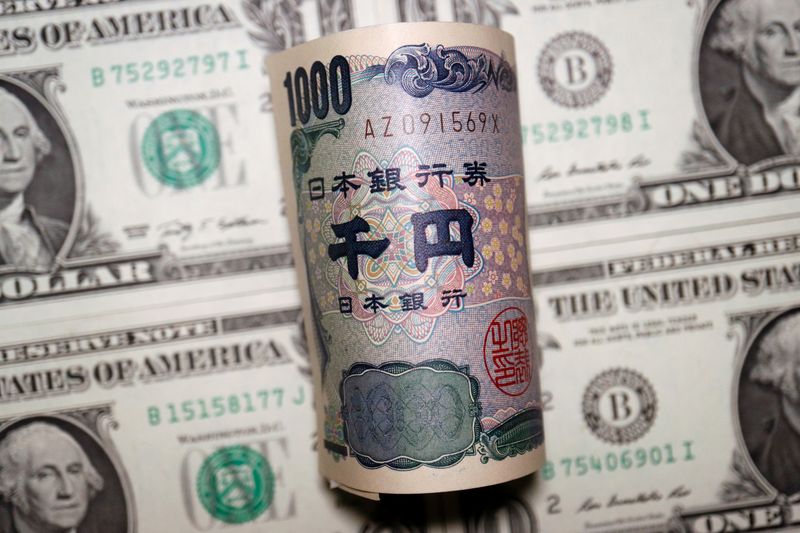
This kept a rebound in the Japanese yen short-lived, with the currency weakening sharply after seeing strong gains on Wednesday. Traders said the yen’s rebound this week appeared to be driven by government intervention in currency markets.
The dollar sank from near six-month highs after the Fed’s comments, but steadied in Asian trade. The prospect of U.S. rates remaining high for longer bodes well for the greenback.
The USDJPY pair, which is inversely related to yen strength, surged 1% to over 156 on Thursday, after falling as low as 153 in overnight trade.
Strength in the yen was pegged largely to two instances of currency market intervention by government officials this week, although they declined to directly comment on any potential corrective moves.
The USDJPY pair had tumbled from 160 on Monday, which traders said was the new line in the sand for Japan when it came to yen weakness. But the factors weighing on the yen- chiefly a dovish Bank of Japan and a wide gap between local and U.S. rates- are expected to remain in play, limiting the effect of government intervention.
Broader Asian currencies moved in a flat-to-low range, and were nursing steep losses this week as concerns over U.S. rates persisted. But an overnight drop in the dollar offered some, albeit fleeting relief.
The Australian dollar’s AUDUSD pair rose 0.1% even as data showed the country’s trade balance shrank to an over three-year low in March.
The Singapore dollar’s USDSGD pair fell slightly, while the South Korean won’s USDKRW pair fell slightly even as data showed inflation grew less than expected in April.
The Indian rupee’s USDINR pair moved little, but traded below record highs hit in April.
The dollar index and dollar index futures both steadied in Asian trade after falling 0.6% in overnight trade.
Pressure on the dollar came from a sharp rise in the yen, while Fed Chair Jerome Powell reiterated that the bank will not raise interest rates any further.
Still, the outlook for the dollar remained buoyed by the prospect of rate cuts by the Fed until at least the fourth quarter.
Focus now turns to nonfarm payrolls data for April, due Friday, for more cues on the economy and interest rates.
To read the full article, Click Here
